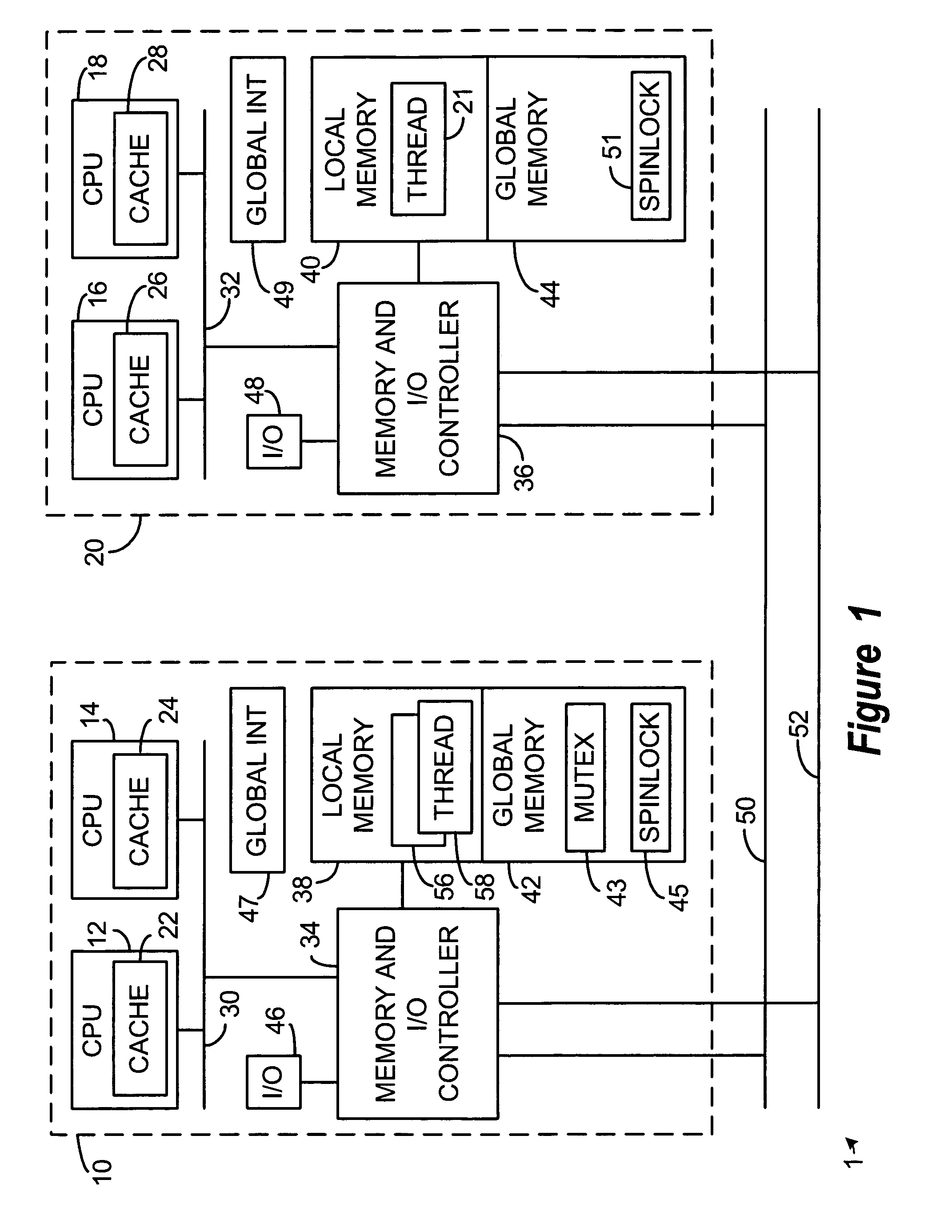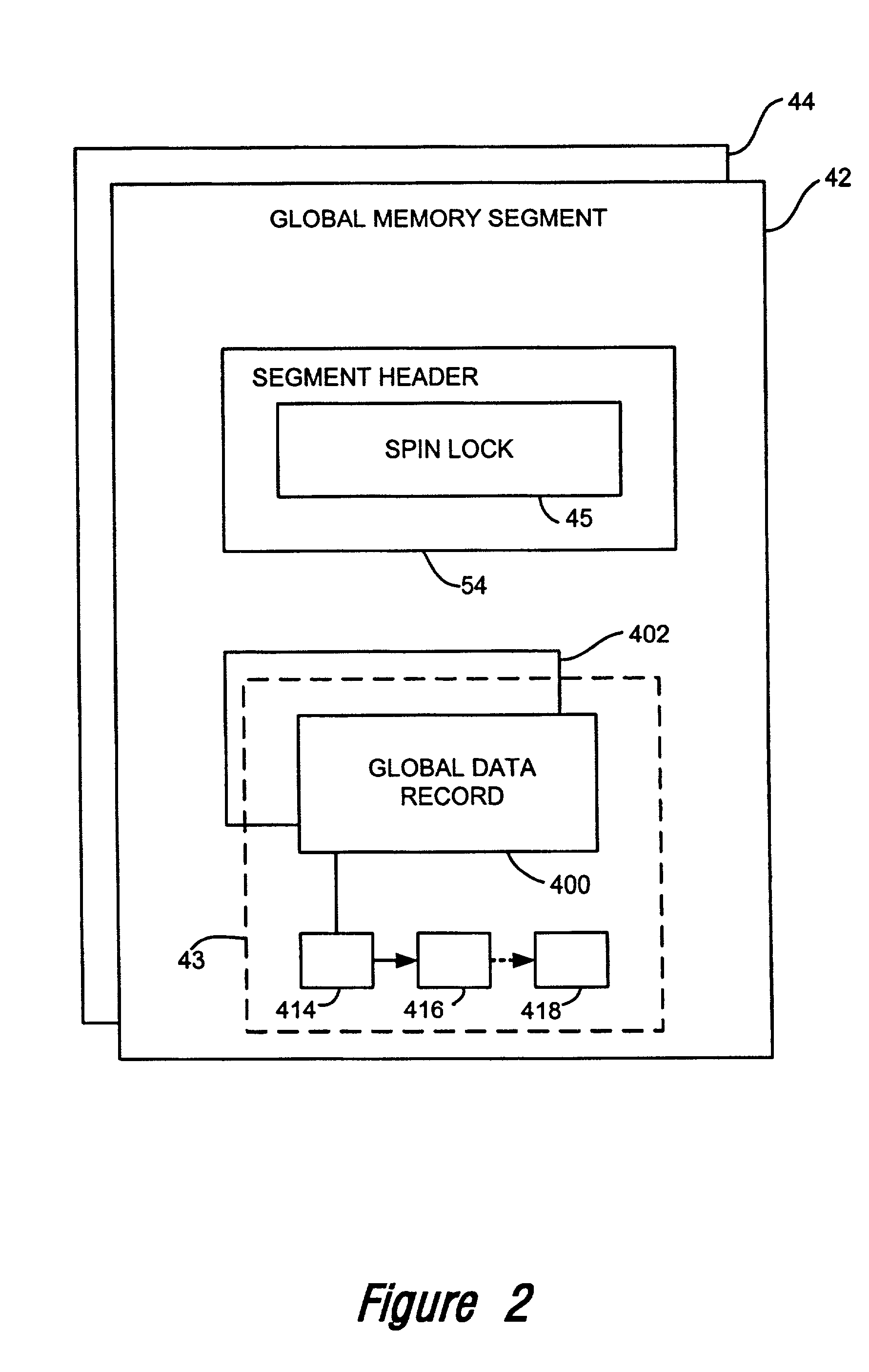Synchronization objects for multi-computer systems
a multi-computer system and object technology, applied in multi-programming arrangements, data processing applications, instruments, etc., can solve problems such as inability to prepare invoices, subtasks also have interdependencies, and difficult to construct programs that run well on multi-computer systems. achieve the effect of extending the mutex functionality of the operating system
- Summary
- Abstract
- Description
- Claims
- Application Information
AI Technical Summary
Benefits of technology
Problems solved by technology
Method used
Image
Examples
Embodiment Construction
A. Introduction
[0035]Before describing the invention, a brief explanation of the way in which mutexes work on multi-processors will be helpful to provide a reference context for the description which follows.
[0036]Suppose three threads have requested ownership of a given mutex that is already owned by some other thread, and suppose each thread is willing to stop processing further instructions until it acquires the mutex. Suppose, in addition, that the threads request ownership of the mutex in the following chronological order.
[0037]Thread A1.
[0038]Thread B1.
[0039]Thread A2.
[0040]Normally, A1 would be expected to gain ownership of the mutex when the current owner releases it. Later, B1 would be expected to gain ownership when A1 releases the mutex, and then A2 when B1 releases it. This behavior would be the result of a First-In-First-Out or FIFO policy on the part of the operating system for managing the outstanding thread acquisition requests for a given mutex. An appropriate exper...
PUM
 Login to View More
Login to View More Abstract
Description
Claims
Application Information
 Login to View More
Login to View More - R&D
- Intellectual Property
- Life Sciences
- Materials
- Tech Scout
- Unparalleled Data Quality
- Higher Quality Content
- 60% Fewer Hallucinations
Browse by: Latest US Patents, China's latest patents, Technical Efficacy Thesaurus, Application Domain, Technology Topic, Popular Technical Reports.
© 2025 PatSnap. All rights reserved.Legal|Privacy policy|Modern Slavery Act Transparency Statement|Sitemap|About US| Contact US: help@patsnap.com



